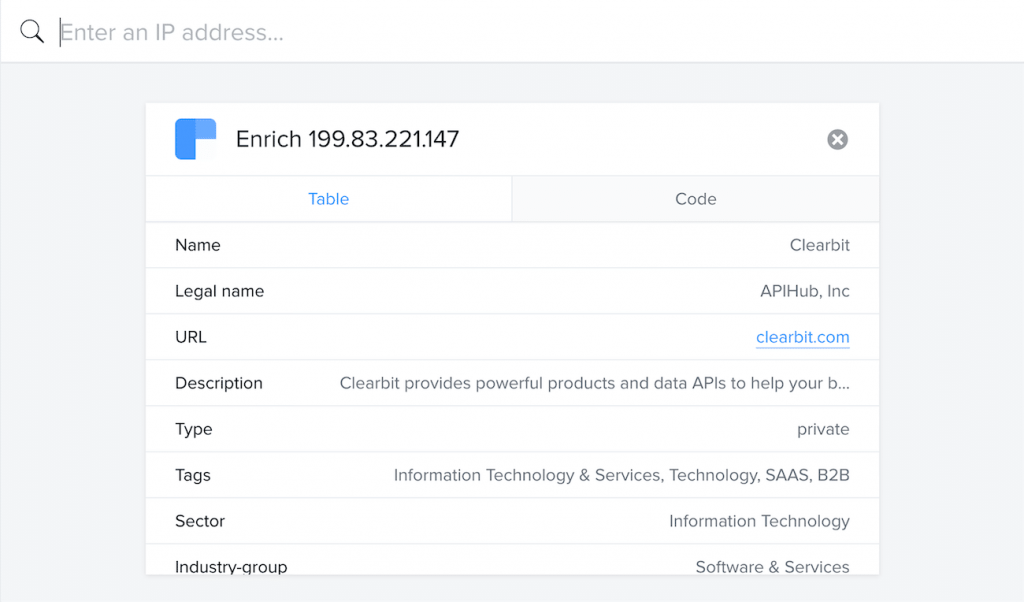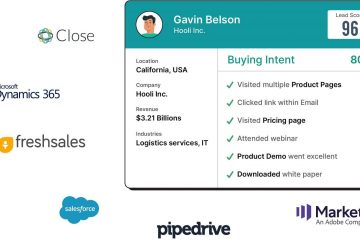Can I Know Who Is Visiting My Website? Yes, But There is a Catch!
Updated on 2nd May, 2024.
Thousands of visitors come to your website every month, and only a handful of them become “leads” by signing up or providing their contact information. Everyone else leaves and many of them never come back.
To put it into perspective, most of your marketing budget and advertising dollars go towards bringing visitors who won’t convert. However, that’s just how things are in life. You show up to 100 people, and only 5 of them will be interested. In a utopian world, all 100 of them would convert, but in the real world, we have to accept things as they are. However, getting better returns on your marketing efforts is more than wishful thinking.
It’s not unusual to ask yourself, “Who is visiting my website?”
Imagine how amazing it would be if you could identify visitors to your website, even if they never signed up. Not just for following up with them using the available information, but also to show relevant content and retarget the right visitors.
How awesome would it be if you could qualify every single visitor to your website and show targeted content in real-time?
Are these things possible? Can you identify anonymous website visitors?
The short answer is YES! But, there is a catch.

Before You Go About Identifying Website Visitors, Set the Right Expectations!
Before we get into the what, why, and how, or go into the “is it legal or not?” territory, let’s set the expectations first.
Who is this for? B2B businesses.
Can you identify individual visitors and get their contact information without them providing it to you? Big NO!
Can you identify the companies your visitors work for? YES but not all fo them.
Can I qualify and work on visitors even if their firmographic or individual profile information is not available? YES!
Now that the expectations are clear, let’s dive into the details.
Identifying Visitors
B2B visitors are buying for their companies and they visit your website during work hours. Most people don’t go home at night and think, “Huh! Maybe I should check out this B2B product while browsing my phone”. They come to your website during work and at that time, they are usually on their company network. And, when this happens, a visitor tracking software can identify the company they work for. This is done through reverse IP lookup. Is this legal? Yes, absolutely! The data you get is fully public information.
![]()
Now, some identification tools may crowdsource the data and provide you company information of visitors who are browsing from their private home network. But, you need to be careful here. First, make sure it’s compliant with data regulations in your country and the countries of your visitors. Second, do not freak your potential customers out. Visitors are taking privacy and data tracking very seriously these days. A personalized message based on their firmographic information while they are on a private network can unnerve them.
Account identification tools that rely on IP addresses (like Salespanel Account Reveal) are GDPR-compliant.
Use Cases That Highlight Why You Should Identify Visitors From Your Website
Develop a Better Understanding of Your ICPs
Visitor firmographics and behavioral data are essential for customer segmentation. You can analyze accounts that visitors come from and use the information to segment customers and know if your campaigns are bringing visitors that match your ICP. This can further enable you to reduce your marketing spend.
Discover Your Traffic Sources
Making your marketing approach more effective requires understanding the sources of the traffic to your website. Consider comparing the number of identified accounts that arrive at your website from your email list to the number that find you through social media or organic search, for instance. If the majority of your leads come from organic search, your SEO strategy may be more effective.
Create a Personalized Customer Experience
To cater to your audience with personalized messaging, you must be able to segment your audience and serve dynamic content tailored to their industries. How would you do that without accurate information about who’s visiting your site? By identifying accounts from your website in real-time or qualifying them, you can highly tailor their experience and server content that resonates with them.
Giving each of your leads a customized experience helps you establish trust since it shows them that your company values them as individuals rather than simply another lead.
Determine Pre-Purchase Behaviors
The acts that prospective customers conduct prior to purchasing your goods or signing up for your service are referred to as pre-purchase behaviors. These include learning about several brands, evaluating a product’s quality, and examining product variants.
Visitor tracking and identification allow you to observe which pages consumers are visiting on your website when you monitor pre-purchase visitor behavior. For instance, do they frequently check out use cases and case studies? Knowing pre-purchase activities lets you convert better.
Measure Marketing Campaign Performance
Visitor tracking and identification is also useful in measuring the performance of your marketing campaigns. You can measure the number of qualified account interactions, determine the traffic sources, levels of engagement, and conversions connected with particular campaigns. This helps you accurately evaluate ROI, identify the most successful campaigns, and make data-driven improvements to future marketing plans.
What Criteria Should You Consider Before Choosing A Visitor Identification Software?
While there are several software options available in the market, you should choose your visitor identification software after carefully considering the following:
Accuracy
You should evaluate the software’s accuracy in identifying website visitors. It would be helpful to evaluate multiple vendors side by side.
Scalability
You must consider whether the software can handle the additional website traffic efficiently as your business and your customer base grow. Choose one that scales its capabilities seamlessly with your website’s needs.
Cost
Making a buying selection requires taking into account the stage your company is in. Choose a software that you can afford to add to your tech stack. Also, most visitor identification tools use the same technique so it does not mean that paying higher gets you a proportionally better product.
Support
You must think about the caliber and scope of the customer service you will get from the product you pick. Choose a software that provides good customer support for the subscription plan you intend to choose.
Integrations
Figuring out the identities of anonymous visitors to your website isn’t enough. The data will need to fuel the rest of your system. Choose one that integrates seamlessly with the more popular CRMs and automation tools, especially the ones you use.
The Best Tools to Identify Visitors from Your Website
In this section, we will cover the best tools available in the market for visitor identification.
Salespanel
Salespanel is our own product, which is why we can say for certain that it does not use any crowdsourcing means or third-party cookies to procure data. Whatever data it will collect for you will be your own.
The product identifies companies that visit your website with reverse DNS but that’s not the end of the story. Salespanel helps you qualify every visitor on your website and serve targeted content to acquire them. When leads finally sign up on your website, the product automatically collects the lead information and attaches their entire customer journey to it. This information can also be synced to your CRM in real-time.
Salespanel identifies accounts visiting your website with industry-leading match rates. The product can identify up to 67% of your accounts. This is 30% higher than the nearest competitor.
With the help of Salespanel, you can essentially track data from first-party websites and immediately attribute it to your customers. As a result, unlike traditional visitor identification tools, it provides you with reliable information that is directly related to your customers. This is ideal for B2B businesses who want to personalize their marketing, automate procedures, or score prospects to sell more successfully.

Clearbit
Clearbit is a data-enrichment service and it has one of the best match rates in the market. However, there are a few drawbacks. First, some of its data-sourcing practices don’t play well with GDPR and other regulations. You might need to provide several levels of visitor data and not just the IP address. Second, you also need to pay a good price for it. Reveal plans usually go for over $12,000/year. A test of 20,000 IP addresses showed that Salespanel could identify 30% more accounts than Clearbit Reveal.

Lead Forensics
Lead Forensics is one of the earliest players in the IP-to-Company data business. And for this reason, they have the goodwill of being the first mover. The data you get from Lead Forensics should be more or less similar to what you get from similar products. However, that does not translate to prices. Lead Forensics is pretty expensive for what it has on offer. With the early mover’s advantage, they were able to dictate the pricing on free will. Combine that with their hard-sales-focused strategy (according to their customers) and you would know how their model works. Not a bad tool by any means but not ‘value for money’ either!

Image Source: Publicare
Is Identifying the Company of the Visitor Enough?
Now, the problem with the identification method is that the only information you can get about a visitor is which company they work for. And, in most cases, the companies that are identified through reverse lookup have more than 200 employees. Even if you were to outreach, how would you find out which particular employee visited your website? If you reach out to a different person, it is no more than a cold email strategy with extra steps.
Also, not all visitors will have identifiable firmographic information. A maximum average of 10% of your visitors that are identified will match your ideal customer profile. What about the rest of your visitors?
Remember when we mentioned being able to qualify and work on ALL of your visitors? We will use website tracking and predictive lead scoring along with firmographic data (when available) to profile visitors and qualify them while also grouping them into cohorts.
You can use this information to show highly relevant content to your visitors while they are on your website and also retarget them later. You can qualify leads and retarget only those who are qualified. You can even create lookalike audiences of qualified leads.
Let’s take an example. There’s an anonymous visitor on your website who has a quality score of 40. He has spent around 10 minutes on your website reading Enterprise use cases. What does that say about the lead? Enterprise leads may not give their details that quickly but they can still be qualified. Using the information you have, you accurately understand the needs of leads like these and send them to your remarketing pixel. You can also show them highly relevant content while they are on your site or show a custom widget promoting them to talk to sales or have automatic messages fired from sales asking them for a demo. Using these strategies can help you nurture these leads and when you keep showing them relevant information, they would end up signing up at some point if they are interested.
The possibilities are truly endless and you can learn more from this article.
The Old School Way!
In the previous section, we discussed a highly effective non-intrusive marketing-based approach to dealing with anonymous visitors. However, it would be unfair to complete the article without discussing the traditional sales-driven approach. If your company relies on a sales-focused customer acquisition strategy, you can identify companies that match your customer profile and reach out to them through the company’s phone line or find a decision-maker from the company. If you are on Salespanel, you can find the information in the company details section. Alternatively, you can also use a prospecting tool like Hunter to also get contact information from decision-makers of the company.
Don’t Miss the Obvious. You Are Better Off Increasing Your Conversion Rates!
The strategies discussed in this article will help you acquire customers from your anonymous visitors. But, let’s not miss the obvious! You can do great with anonymous visitors but the best outcome will always be having more sign-ups or form submissions. Once a lead gives you their information, they opt themselves into your pipeline. It is a good idea to look for opportunities to improve your base conversion rate. Even small things like changing a form field or removing unneeded form field elements can significantly improve your conversion rates. Showing personalized content based on available data (discussed earlier) and fast-tracking qualified visitors and making it easy for them to sign up can also improve your conversion rates. You can also A/B test your copywriting, forms, and landing pages to find out the combinations that have the best conversion rates.
Final Thoughts
Identifying website visitors is a threefold strategy:
- Improve your funnels and increase conversion rates so more people end up signing up.
- Qualify visitors who don’t sign up and engage qualified leads to influence them into signing up.
- Identify companies of anonymous visitors. Find leads who match your customer profile and reach out to them if you have an outreach-focused sales model.
If you have any questions or need any help with the setup, we are just one email away.
Frequently Asked Questions (FAQs)
Can I identify visitors from my website?
Yes, but there’s a catch! You can’t legally identify individual visitors without their consent. However, for B2B sites, you can often determine which companies are visiting.
How can I reliably identify visitors from my website?
The most straightforward method is using lead magnets, such as sign-up forms, where visitors voluntarily provide their contact information. This ensures reliable and consent-based visitor identification.
Less than 10% of my visitors sign up. What do I do about the rest?
To increase the number of sign-ups, consider enhancing your lead magnets to reduce friction. Employ tools like Salespanel to qualify visitors in real-time, showing personalized content that compels more visitors to sign up.
I want to identify visitors who did not sign up. Is it possible?
Legally, you cannot identify specific individuals who haven’t signed up. However, you can identify the companies (accounts) they represent if it’s a B2B context. Typically, 30-60% of such visitors can be identified depending on the tools used.
What can I do with the accounts after identifying them?
Once you’ve identified these accounts, you can qualify them to see if they match your target customer profile. Qualified accounts can then be targeted with personalized campaigns, pursued by sales representatives, or included in B2B advertising campaigns, such as those on LinkedIn.
Which tools can I use to identify who is visiting my website?
You can use tools such as Salespanel Account Reveal, Clearbit, or Lead Forensics. It’s crucial to trial various products to compare data accuracy, pricing, and features. Remember, a higher price doesn’t always guarantee better data since most tools use similar underlying technologies for visitor identification.
Is it legal and GDPR-compliant to identify accounts from my website?
Generally, it is legal and compliant as long as you are identifying companies, not individuals. The data used by these tools is typically public information. However, always verify compliance with your data vendor to ensure adherence to legal standards.
What information can visitor identification tools provide?
Most tools offer company information and basic visitor tracking capabilities. Tools like Salespanel go further by providing company information and capturing individual visitor data once they sign up, allowing for tracking of the customer journey from start to finish.
Sell more, understand your customers’ journey for free!
Sales and Marketing teams spend millions of dollars to bring visitors to your website. But do you track your customer’s journey? Do you know who buys and why?
Around 8% of your website traffic will sign up on your lead forms. What happens to the other 92% of your traffic? Can you identify your visiting accounts? Can you engage and retarget your qualified visitors even if they are not identified?



